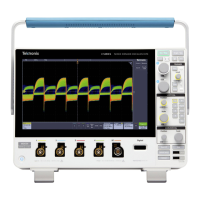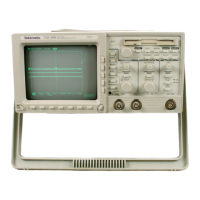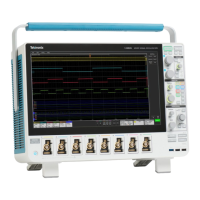Voltage Comparison Measurements
For application where signal voltage is compared to
some signal reference amplitude, it may be desirable to use
a different deflection factor than available with settings of
the VOLTS/DIV switch. To establish an arbitrary vertical
deflection factor, proceed as follows:
1 Connect a known amplitude reference signal to either
vertical input connector. Set Vertical Mode to the channel
being used.
2. Adjust VOLTS/DIV and CAL(Variable) control for
desired vertical deflection. DO NOT change this setting
after the reference has been established.
Substituting example values:
Reference signal amplitude is 30 volts with a VOLTS/
DIV switch set to 5 and the VOLTS/DIV Variable ad
justed to provide a vertical deflection of 4 divisions:
. „ 30 volts
1.5
-------------
4 x 5
4. To measure an unknown signal, set the VOLTS/DIV
switch to provide sufficient vertical deflection for an
accurate measurement. DO NOT change or adjust the
VOLTS/DIV Variable knob. Determine the vertical de
flection (in divisions) and calculate the amplitude of the
unknown signal using the following formula:
Signal - VOLTS/DIV X Vertical X Vertical
amplitude Setting Conversion deflection
Factor (in divisions)
3. Determine vertical converison factor using this
formula:
Vertical Reference signal amplitude (in volts)
Conversion = Vertical deflection (in divisions) x
Factor VOLTS/DIV setting
Substituting example values:
VOLTS/DIV switch set at 1 and vertical deflection of
the unknown signal is 5 divisions. Conversion factor is
1.5.
1 x 1.5 x 5 ■ 7.5 volts.
REV A SEP 1979
305 Operators 25
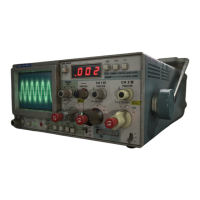
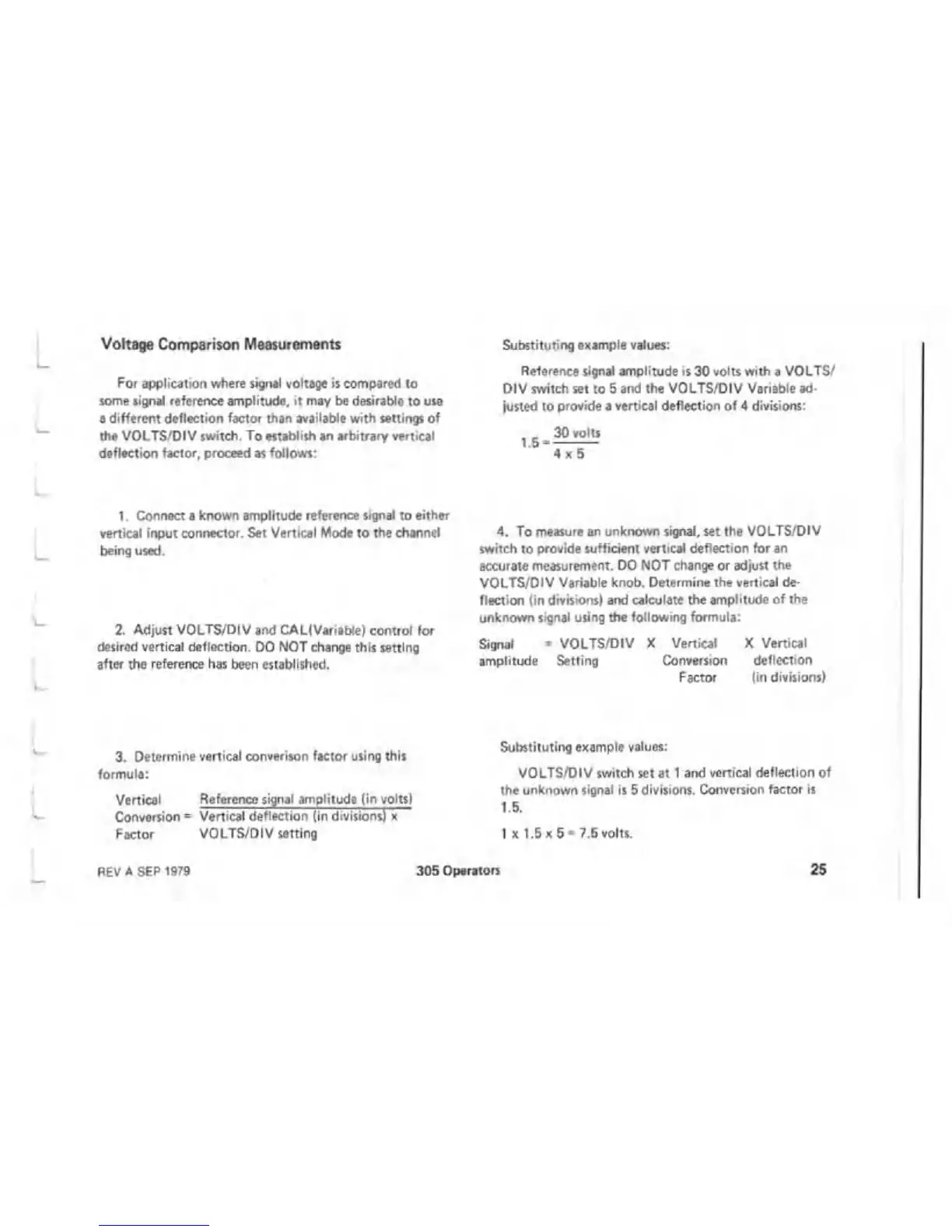